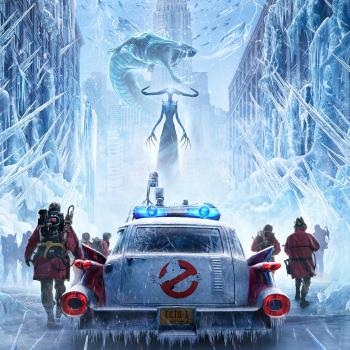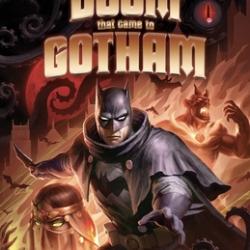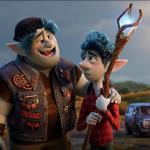Review of The Wolverine, Directed by James Mangold
Wolverine was always the coolest of the X-Men. He had a shady past, an invincible adamantine skeleton, regenerative healing powers, and (most importantly) really big knives that spurted from his arms whenever he got mad–which was the best part of every episode of the early ‘90s Saturday morning cartoon (which had the best opening theme of any cartoon I can remember). He got his own movie, sort of, in X-Men Origins: Wolverine (2009), a passable, slightly tepid affair sadly bogged down with all the problems of a prequel, an origins story, and an introduction to a dozen other supporting characters. In this year’s follow-up, he gets the movie he deserves. The Wolverine is (almost) an excellent film.
 Wolverine is an intriguing character because, when we were introduced to him in the first X-Men movie (2000), he had amnesia and neither he nor we know much about him (which was true to the cartoon and, so far as I know, the original comic). We get hints about a past in the Army, an experiment gone wrong, a crooked bureaucrat, and a double-cross. We get more details in the 2009 film, including the poignant fact that, because of his healing powers, he is actually two centuries old and has served in every war he could and is haunted by all of them. Wolverine has the worst case of PTSD in history. Which makes the opening sequence of the new film that much more harrowing, more on which below.
Wolverine is an intriguing character because, when we were introduced to him in the first X-Men movie (2000), he had amnesia and neither he nor we know much about him (which was true to the cartoon and, so far as I know, the original comic). We get hints about a past in the Army, an experiment gone wrong, a crooked bureaucrat, and a double-cross. We get more details in the 2009 film, including the poignant fact that, because of his healing powers, he is actually two centuries old and has served in every war he could and is haunted by all of them. Wolverine has the worst case of PTSD in history. Which makes the opening sequence of the new film that much more harrowing, more on which below.
Wolverine is confused, hurt, and angry, but he has a sense of justice as strong as his indestructible body. He instinctively seeks to right wrongs, including the wrongs done to himself. That tempts him towards vengeance (in this sense, he is akin to Batman). Over the course of the three X-Men movies he grapples with these demons, learns about his past, and works with Charles Xavier’s team of vigilante warrior mutants.
Then, he kills the woman he loves. In the finale of X-Men: The Last Stand (2006), Wolverine is forced to kill Jean Grey, his love, because her destructive psychic powers have taken over her body and threaten to annihilate the world.
That, roughly, is where the new movie opens. Wolverine is a quivering husk, a shell of a man broken and hollowed out by guilt and trauma. He is a homeless vagabond more at home with beasts than men. Jean visits him in his dreams, prolonging his torment. The new movie gives us no flashbacks and no exposition of backstory. I wonder if someone unaware of the previous films would have the slightest clue what was going on.
I.
More accurately, the movie opens with Wolverine getting nuked. Literally. We see him, a prisoner of war in a Japanese interment camp in Nagasaki in 1945, save a Japanese soldier by shielding him from the nuclear blast with his own body. Wolverine is turned to a grisly, charred corpse before his healing powers kick in. (This isn’t remotely like Indiana Jones getting cartoon-nuked in Crystal Skull; this is more like Sarah Conner getting incinerated in her dream in Terminator 2. They pushed PG-13 as far as it could go for this film). Of course, just because he heals doesn’t mean he can’t feel pain. For the Wolverine, life is pain.
That provides the hook for the film: in the present day, the same Japanese soldier, now a fabulously rich businessman, wants to thank Wolverine by giving him the gift of mortality. The Wolverine travels to Japan, gets mixed up with the Yakuza, rides a bullet train, visits a bizarre Japanese brothel house, and recites lines in an obligatory love story. The film has a (disappointingly) carbon-copy plot and trite romance that you can simply ignore.
The real fun is watching Wolverine unhinged. Wolverine fights Japanese gangsters; ninjas; a warrior clad in medieval Samurai armor; a legion of Black Hand archers; and a hulking adamantine Cyborg. He is nuked, stabbed, shot, grappled, poisoned, and impaled straight through the chest with a katana blade. He also performs open-heart surgery on himself after slashing his own chest open with his claws. Yes, you read that right. This is the stabbiest, slashing-est PG-13 movie ever made. Fanboys are ecstatic that the director is talking of an unrated director’s cut on the DVD. If ever a superhero merited an R-rated film, it is the Wolverine.
II.
Truthfully, the violence is actually restrained compared to the apocalyptic mayhem of this summer’s other big releases. I complained that the violence in Star Trek Into Darkness was too cartoonish and casual, offering up exploding cityscapes as entertainment. I could make the same comment about the destruction of large swaths of Metropolis in Man of Steel and the end of the world in World War Z. On bodycount alone, The Wolverine is one of the gentlest films out this summer.
But the violence in The Wolverine is more disturbing because it is more emotionally intimate. That is because it flows from the character. When the Wolverine slashes with his claws, he is lashing out with the pain, guilt, and wrath of a man who remembers too much death. There is an animal intensity to Hugh Jackman’s pitch-perfect portrayal of the Wolverine in this film. Especially, but not only, in the fight scenes he emotes a primal, feral energy.
Wolverine’s inescapable inner torment gives the movie its thematic heft. Because he is nearly immortal, he is trapped with his demons. He will never stop remembering having killed the woman he loved, nor all the war and death he lived through. “Everyone you know dies,” one character tells him. Wolverine’s plight reminded me of the immortals on this island of Luggnagg in Jonathan Swift’s Gulliver’s Travels. They are immortal, but they continue aging. After a century or two, they are infirm and demented—yet they still have eternity to live. Wolverine’s body does not decay, but his soul does. If you couldn’t heal from all your hurts, would you want to live forever? God’s curse of mortality on Adam and Eve was, in fact, merciful. What monsters we would become, sinful and immortal, with eternity to delve deeper into brokenness and pain.
Ultimately, Wolverine heals by following Hollywood’s formula: stabbing bad guys and kissing a pretty girl. That’s about what you can expect from a superhero movie, and that’s what you get. I suppose it’s true that doing whatever our hand finds to do with all our might (Ecclesiastes 9:10) is therapeutic, as is working for justice, as Wolverine does. And, while I’m being charitable, the “salvation by romance” trope in this film isn’t quite as bad as it is in other films because it’s not wholly misplaced. Wolverine is struggling to overcome his guilt for having killed Jean Grey; falling in love with and protecting another woman is a natural character-arc for him.
But if you don’t want to see the movie for that, see it because Wolverine fights ninjas. That’s good too.












